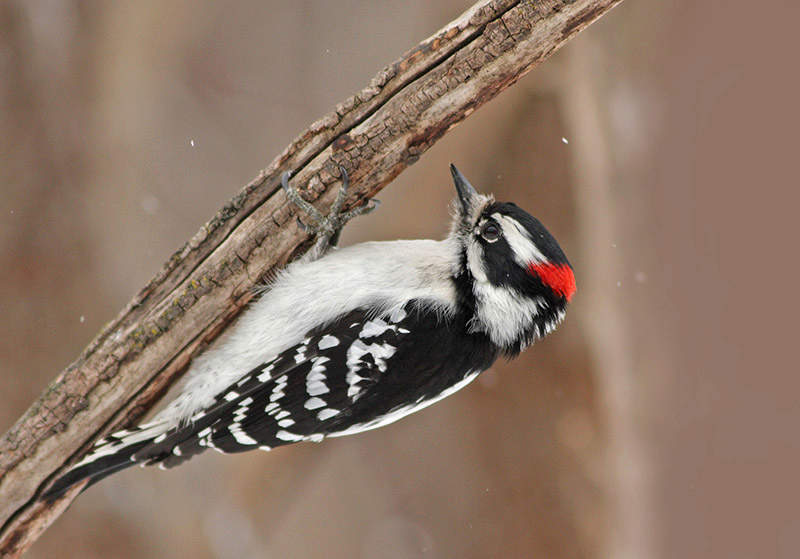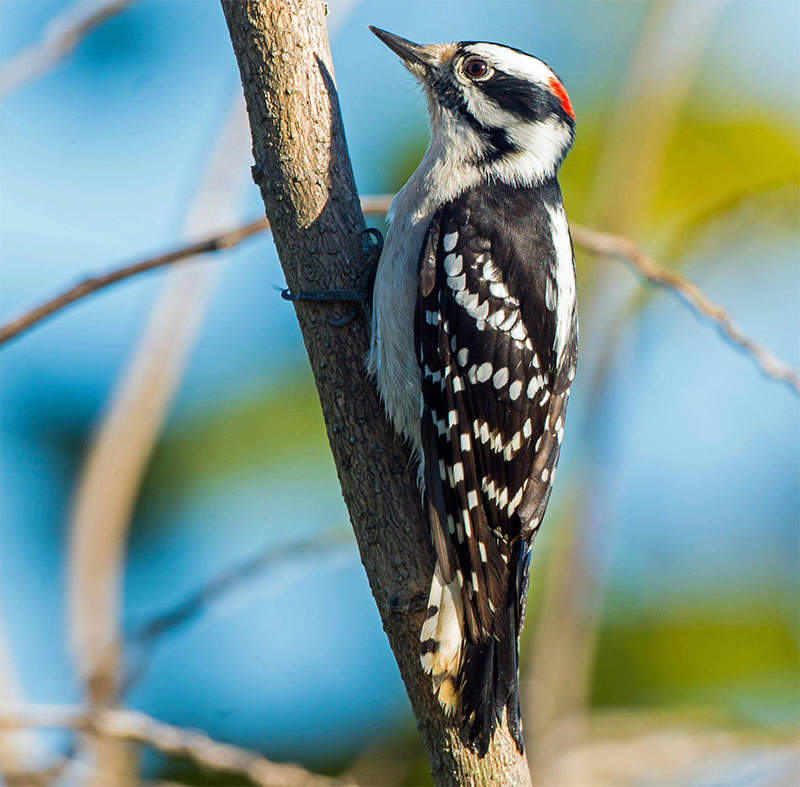Featured Birds: Downy Woodpeckers
About ten days after the winter solstice, day length is noticeably growing longer. That’s all a Downy Woodpecker needs for hormones to start kicking in and drumming to commence. Both males and females perform this rapid-fire drumming, which helps them find a mate and reinforce their pair bond, and to defend their territory.
The louder a woodpecker can drum, the farther the sound carries, and the larger the territory it may be able to defend. This is why they choose the most resonant part of a tree for drumming. Their drum rolls last only about a second and a half, but they hit the tree 17 beats per second, and they may repeat this drum roll a dozen times or more every minute.
Drumming is an important part of the nesting cycle, but North America’s tiniest woodpecker won’t start producing eggs until April or later, even in the most southerly parts of their range.

During the times of day that they’re not drumming, Downy Woodpeckers spend a lot of time searching for food. At bird feeding stations, they take a lot of suet, but also feed on peanut butter and sunflower seeds. Away from feeders, they often follow gigantic Pileated Woodpeckers. After a Pileated Woodpecker is done digging into a tree, the tiny downy can feed on insects it would never be able to expose or reach on its own.
Downy Woodpeckers also take time each day to preen their feathers and pay attention for predators and other dangers. When they can, they spend time excavating cavities which can be used as nighttime roosting shelters or, come spring, as a nest. They dig out most of the holes they’ll need for winter in fall but are prepared to make new ones whenever storms knock down their roost tree or a more aggressive animal takes over their cavity. They virtually always nest in trees, but sometimes use bird houses as a nighttime roost in winter.

Downy Woodpecker plumage is almost identical to that of the larger Hairy Woodpecker. In both species, males have a bright red marking on the nape (where the back of the head reaches the neck); females are entirely black and white. If both species visit our feeders regularly, we can easily learn to tell them apart by size. It’s trickier when we’re first learning to recognize them or when we see one in a new setting.
Pay attention to the proportionally longer bill in the Hairy Woodpecker, which is almost as long as the bird’s head. The Downy Woodpecker’s bill is noticeably tinier. Also, the outer tail feathers on a Hairy Woodpecker are pure white; on the Downy Woodpecker, small black markings on those white feathers are usually visible.





